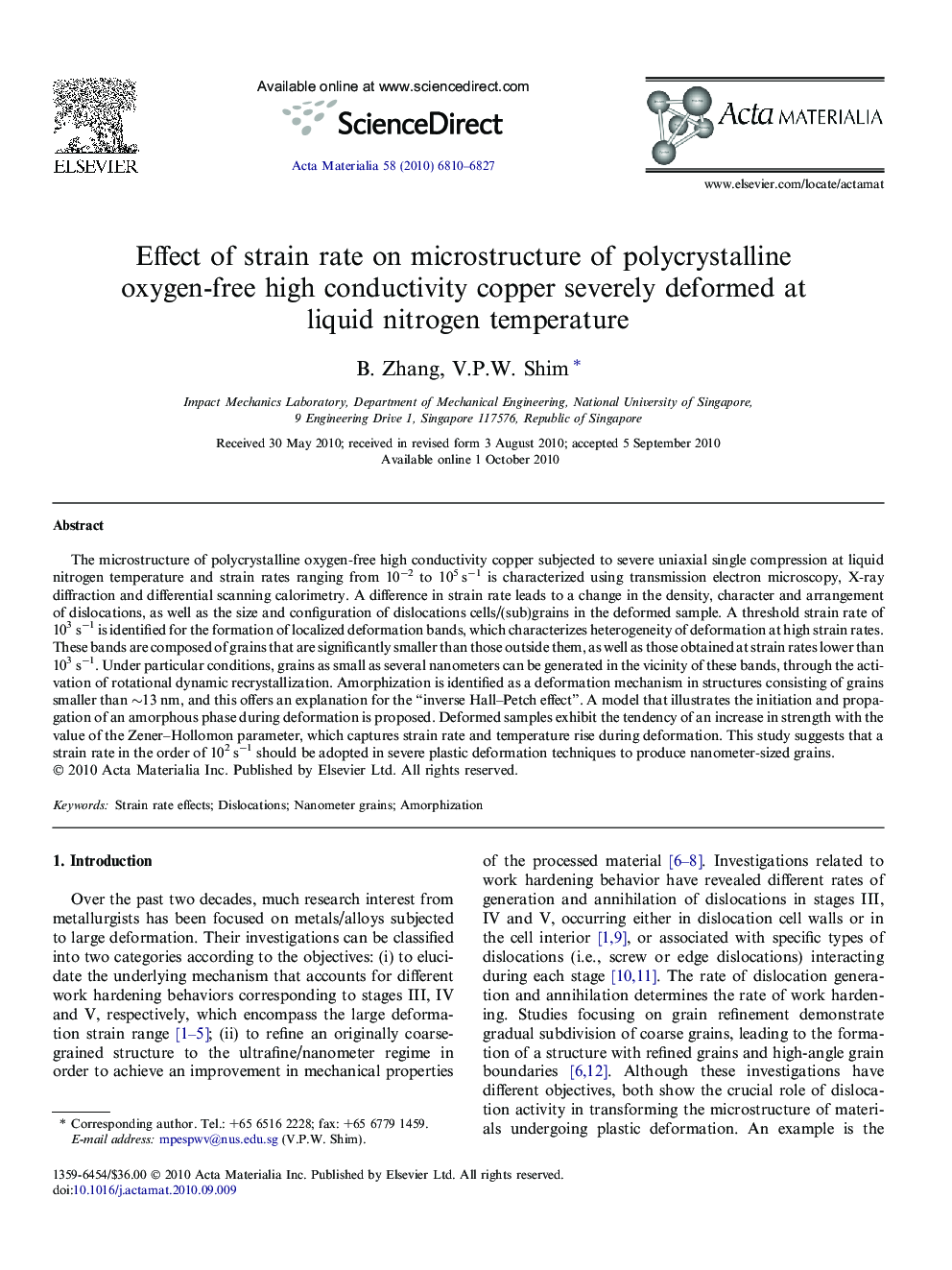| Article ID | Journal | Published Year | Pages | File Type |
|---|---|---|---|---|
| 1447966 | Acta Materialia | 2010 | 18 Pages |
The microstructure of polycrystalline oxygen-free high conductivity copper subjected to severe uniaxial single compression at liquid nitrogen temperature and strain rates ranging from 10−2 to 105 s−1 is characterized using transmission electron microscopy, X-ray diffraction and differential scanning calorimetry. A difference in strain rate leads to a change in the density, character and arrangement of dislocations, as well as the size and configuration of dislocations cells/(sub)grains in the deformed sample. A threshold strain rate of 103 s−1 is identified for the formation of localized deformation bands, which characterizes heterogeneity of deformation at high strain rates. These bands are composed of grains that are significantly smaller than those outside them, as well as those obtained at strain rates lower than 103 s−1. Under particular conditions, grains as small as several nanometers can be generated in the vicinity of these bands, through the activation of rotational dynamic recrystallization. Amorphization is identified as a deformation mechanism in structures consisting of grains smaller than ∼13 nm, and this offers an explanation for the “inverse Hall–Petch effect”. A model that illustrates the initiation and propagation of an amorphous phase during deformation is proposed. Deformed samples exhibit the tendency of an increase in strength with the value of the Zener–Hollomon parameter, which captures strain rate and temperature rise during deformation. This study suggests that a strain rate in the order of 102 s−1 should be adopted in severe plastic deformation techniques to produce nanometer-sized grains.
